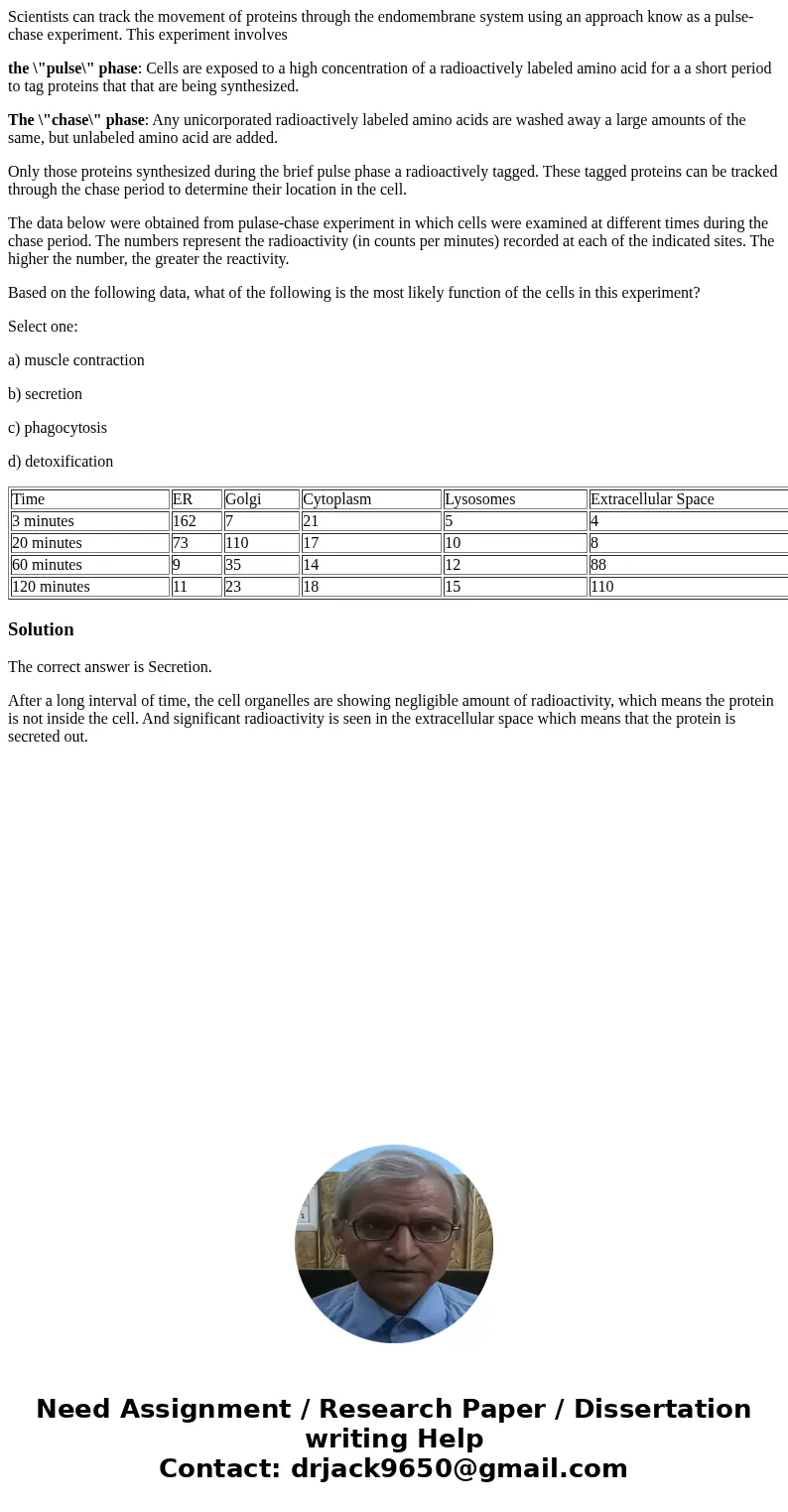Scientists can track the movement of proteins through the en
Scientists can track the movement of proteins through the endomembrane system using an approach know as a pulse-chase experiment. This experiment involves
the \"pulse\" phase: Cells are exposed to a high concentration of a radioactively labeled amino acid for a a short period to tag proteins that that are being synthesized.
The \"chase\" phase: Any unicorporated radioactively labeled amino acids are washed away a large amounts of the same, but unlabeled amino acid are added.
Only those proteins synthesized during the brief pulse phase a radioactively tagged. These tagged proteins can be tracked through the chase period to determine their location in the cell.
The data below were obtained from pulase-chase experiment in which cells were examined at different times during the chase period. The numbers represent the radioactivity (in counts per minutes) recorded at each of the indicated sites. The higher the number, the greater the reactivity.
Based on the following data, what of the following is the most likely function of the cells in this experiment?
Select one:
a) muscle contraction
b) secretion
c) phagocytosis
d) detoxification
| Time | ER | Golgi | Cytoplasm | Lysosomes | Extracellular Space |
| 3 minutes | 162 | 7 | 21 | 5 | 4 |
| 20 minutes | 73 | 110 | 17 | 10 | 8 |
| 60 minutes | 9 | 35 | 14 | 12 | 88 |
| 120 minutes | 11 | 23 | 18 | 15 | 110 |
Solution
The correct answer is Secretion.
After a long interval of time, the cell organelles are showing negligible amount of radioactivity, which means the protein is not inside the cell. And significant radioactivity is seen in the extracellular space which means that the protein is secreted out.

 Homework Sourse
Homework Sourse